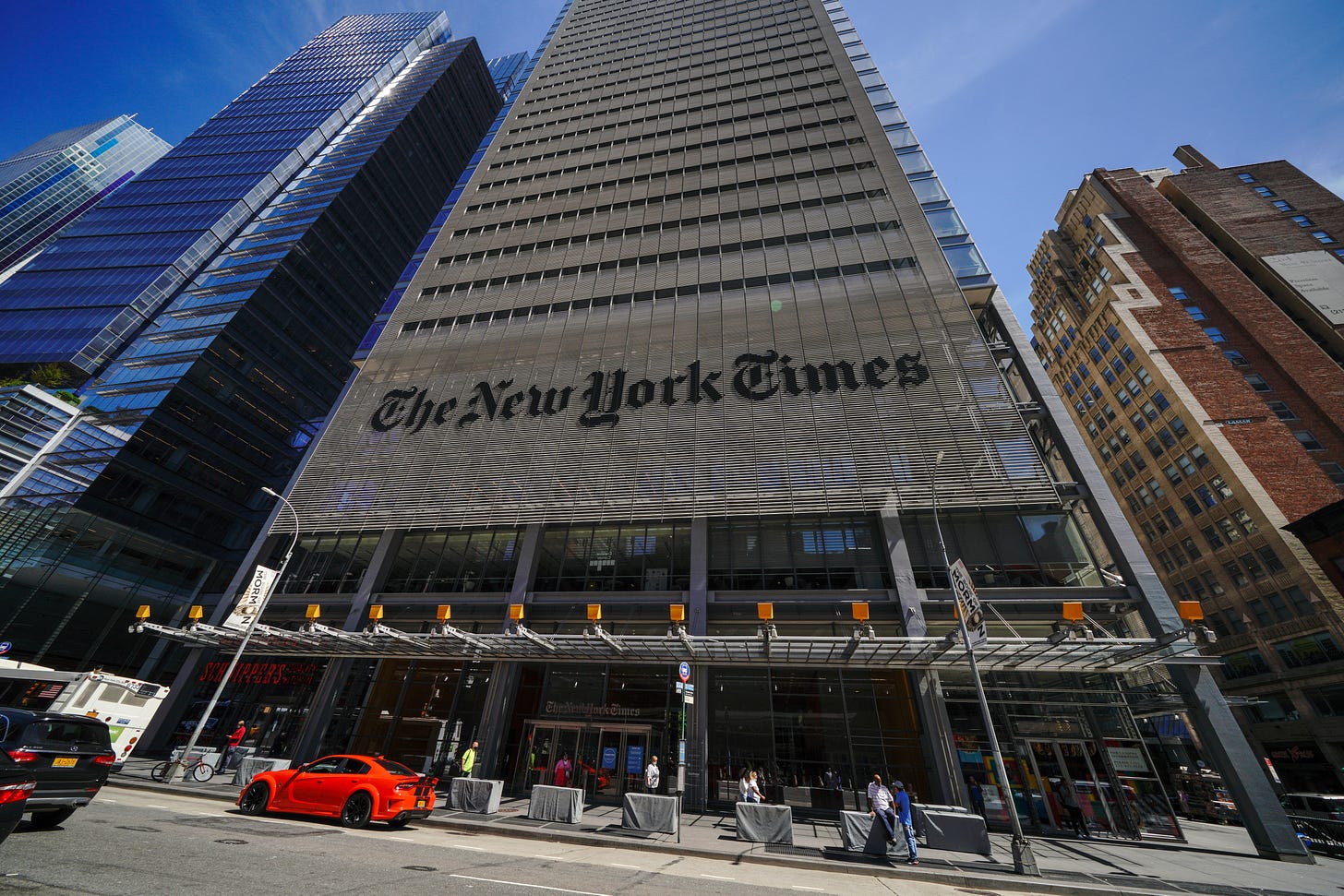Criticizing Public Figures, Including Influential Journalists, is Not Harassment or Abuse
As social media empowers uncredentialed people to be heard, society’s most powerful actors seek to cast themselves as victims and delegitimize all critiques.

The most powerful and influential newspaper in the U.S., arguably the west, is The New York Times. Journalists who write for it, especially those whose work is featured on its front page or in its op-ed section, wield immense power to shape public discourse, influence thought, set the political agenda for the planet’s most powerful nation, expose injustices, or ruin the lives of public figures and private citizens alike. That is an enormous amount of power in the hands of one media institution and its employees. That’s why it calls itself the Paper of Record.
One of the Paper of Record’s star reporters, Taylor Lorenz, has been much discussed of late. That is so for three reasons. The first is that the thirty-six-year-old tech and culture reporter has helped innovate a new kind of reportorial beat that seems to have a couple of purposes. She publishes articles exploring in great detail the online culture of teenagers and very young adults, which, as a father of two young Tik-Tok-using children, I have found occasionally and mildly interesting. She also seeks to catch famous and non-famous people alike using bad words or being in close digital proximity to bad people so that she can alert the rest of the world to these important findings. It is natural that journalists who pioneer a new form of reporting this way are going to be discussed.
…click on the above link to read the rest of the article…